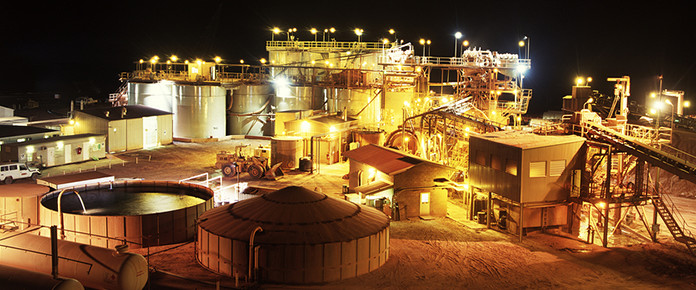 SmallCapPower reporter Angela Harmantas spoke with House Mountain Partners LLC’s President Chris Berry recently, who outlines a new model miners must embrace to survive going forward. He also talks about the energy metals, including lithium, which are expected to see a surge in demand and mentions two juniors he’s watching at this time.
SmallCapPower reporter Angela Harmantas spoke with House Mountain Partners LLC’s President Chris Berry recently, who outlines a new model miners must embrace to survive going forward. He also talks about the energy metals, including lithium, which are expected to see a surge in demand and mentions two juniors he’s watching at this time.
Angela Harmantas| December 1, 2015: House Mountain Partners LLC’s President Chris Berry believes that resource companies need to embrace new technologies and ways of thinking in order to compete in a new era. As geopolitics, demographics and technologies converge to create opportunities in a global energy market, Berry and his team at the Disruptive Discoveries Journal focus on uncovering new trends and the companies who are embracing them. In an exclusive interview with SmallCapPower (SCP), Mr. Berry tells us what metals and minerals had a good year in 2015, shares his trends to watch in 2016 and discusses why the word “disruptive” shouldn’t be feared by investors.
SmallCapPower: Can you give us a brief background to yourself and the Disruptive Discoveries Journal?
Chris Berry: I’ve always been interested in macro trends, but I wanted to explore more thoroughly how those forces create opportunities in the commodities markets, particularly energy. I decided to focus my research on metals and minerals that enable affordable energy. That started getting me thinking about niche commodities like lithium, uranium, cobalt, graphite and rare earths. Many of these metals and minerals are going to see huge increases in demand in the not-too-distant future. Today, we’re looking for companies with those deposits and opportunities that can lead into existing energy supply chains. We spend a lot of time looking at the disruptive technologies that allow commodity companies to survive and thrive, regardless of where they are in the supply chain. I’ll admit that the word ‘disruption’ is overused but our argument is that most of these mining companies aren’t going to exist unless they find a way to leverage these technologies to lower their cost profile. If you’re an established competitor with a decent market share and high profits, then yes, disruption to your business is a bad thing. But with the excess capacity in the marketplace after the last commodity super-cycle and an enormous amount of debt on the balance sheets of mining companies, the only way forward is to embrace a new model. The industry needs to move at the same pace as the rest of the world if it ever really hopes to rid itself of the current excesses and prepare for the next cycle.
SmallCapPower: You’re an expert in the energy metals space. What would you say were some of the bright spots in this sector in 2015?
Chris Berry: Clearly there has not been a lot to cheer about in the metals space in 2015. Despite that, some energy metals have done comparatively well. Lithium had a standout year – spot prices are increasing by 15-20% based on strong demand from the battery sector. Other metals and minerals that had good years are cobalt and graphite, where we’ve seen demand grow well above global GDP, which is a benchmark for me in deciding where to allocate capital. Uranium is another interesting story: it’s probably one of the most hated of the energy metals, but prices are up 3% this year, which is saying something given its less-than-savory reputation. It speaks to the necessity of these metals in the energy supply chain. Because the technology is rapidly improving, these sources of energy are becoming more competitive with traditional fossil fuel sources. The price of solar energy or lithium batteries has considerably declined over the past few years, which portends some significant changes in how energy is produced, consumed and stored.
SmallCapPower: It’s hard to talk about the space without mentioning Tesla’s gigafactory in construction in Nevada, which is on track to start production of lithium batteries by the end of 2016. How might Tesla’s plans and activities affect energy metals in 2016?
Chris Berry: I think Tesla’s plans will have a positive effect on the price of energy metals over the next few years – we’ve seen it already in the lithium market. We can’t have a conversation about energy storage or electric vehicles without including Tesla’s plans. The company has gone on record saying that it wants to be in full production at the gigafactory by 2020, which would mean 500,000 battery packs per year. At that run rate, that single factory will produce more batteries than the entire industry does today. Whether or not Tesla succeeds remains to be seen, but it’s important to remember that there is already an existing lithium battery supply chain in the works largely concentrated in Asia. Companies like LG Chem and Samsung SDI are also planning on expanding capacity over the next few years, so it’s not just Tesla that wants to reshape mobility and energy storage. It’s the individual plans from all of these companies taken as a whole that paints such a robust demand picture for energy metals.
SmallCapPower: Are North American producers at an advantage thanks to Tesla’s commitment to secure local sources of lithium?
Chris Berry: That is one way of looking at it, but it’s not entirely true for a few reasons. Most of the lithium in production today comes from South America, Australia and China. The end game for Tesla is lowering the cost of the battery, because it decreases the final price of the car itself and vehicle electrification becomes affordable. If they’re able to source lithium from a local producer, the cost of transport and production will keep a lid on costs. One of the challenges in the lithium space is that there are only a handful of existing producers that can potentially supply the gigafactory as it stands today – none of the lithium projects currently in development will be in a position to supply Tesla for at least a few years. It could be difficult for Tesla and the OEMs of the world to secure supply.
SmallCapPower: A number of market watchers have said that we’ve hit the true bottom in 2015 in the commodities market, but you disagree. Why do you think we haven’t seen the bottom?
Chris Berry: I wrote recently that I was one of the so-called experts who thought we had hit the bottom last year, but I was clearly wrong. Right now, the entire fate of the commodities markets rests in China. Over the past year we’ve seen a lot of volatility in that part of the world and it has become increasingly clear to me that the transition that China needs to make, from an export-led growth model to a consumer-led model, is going to be more challenging than once thought. This summer we saw China devalue its currency by about 3% and try to create this wealth effect in their equity markets, which left them essentially frozen. It really spooked the broader financial markets and generated the line of thought that things in China might get worse before they get better. The other problem specific to commodities is that producers aren’t cutting their output at all, which is reinforcing the excess capacity in the global markets and keeping prices depressed. It brings the threat of a deflationary spiral to the fore. These are the real reasons why I think we could see lower metal prices in 2016.
SmallCapPower: Can you talk about some of the “triggers” or events that you’ll be paying attention to in 2016 and why they’re important?
Chris Berry: One of the biggest triggers to a change in sentiment would be capacity cuts, especially from copper and iron ore producers. We have seen some cuts over the past year – Glencore, for example, took about 400,000 tons of copper production out of the market, which is positive. But it’s crucial that more producers follow suit to rebalance supply and demand. Another trigger is the timing of an interest rate increase in the United States. If and when rates rise, it will have repercussions all over the world. Here’s the key: if interest rates do increase, we’ll start to see an increased flow of capital out of emerging markets and into the U.S. dollar in search of a higher yield. This means a stronger U.S. dollar but more pain for commodities. The last event I’m watching is this game of chicken between OEPC and the U.S. shale producers, and who will blink first. They’ll both continue to flood the market with product but any break in supply on either side should recalibrate oil prices in the US$60-65 range. It’s interesting from both an economic and a geopolitical perspective.
SmallCapPower: Do you see any opportunities for investors in the small cap space? If so, where and are there any particular companies you’d like to mention?
Chris Berry: Some of the themes that we at Disruptive Discoveries are following now are energy efficiency and energy infrastructure. In terms of metals, we’ve talked about lithium and cobalt but scandium is also interesting from the perspective of growth in the solid oxide fuel cell business. One company in the lithium space I’m watching right now is Western Lithium USA Corporation (TSX: WLC), who just emerged with a new management team after merging with Lithium Americas. They’re in a good position to compete with the oligopoly because they’re diversified geographically and geologically. I think the company has staying power as the market matures. Another company I’m looking at is Nano One Materials Corp. (TSXV: NNO), based in Vancouver. They’re doing pioneering work in terms of increasing the energy density and overall capacity of the lithium ion battery. They’re using proprietary processes to increase the energy density of the battery.
SmallCapPower: Do you have any final thoughts to share with us today?
Chris Berry: Our angle is that this market has changed – what hasn’t changed is the need for affordable energy to grow and sustain a society. We see technology and natural resources colliding to create opportunities and we’re focused on uncovering these opportunities.
To read more insights from Chris Berry and the team at the Disruptive Discoveries Journal, go to www.discoveryinvesting.com. Questions, comments or suggestions for expert interviews? Contact me by email at angela@smallcappower.com or on Twitter: @aharmantas.



